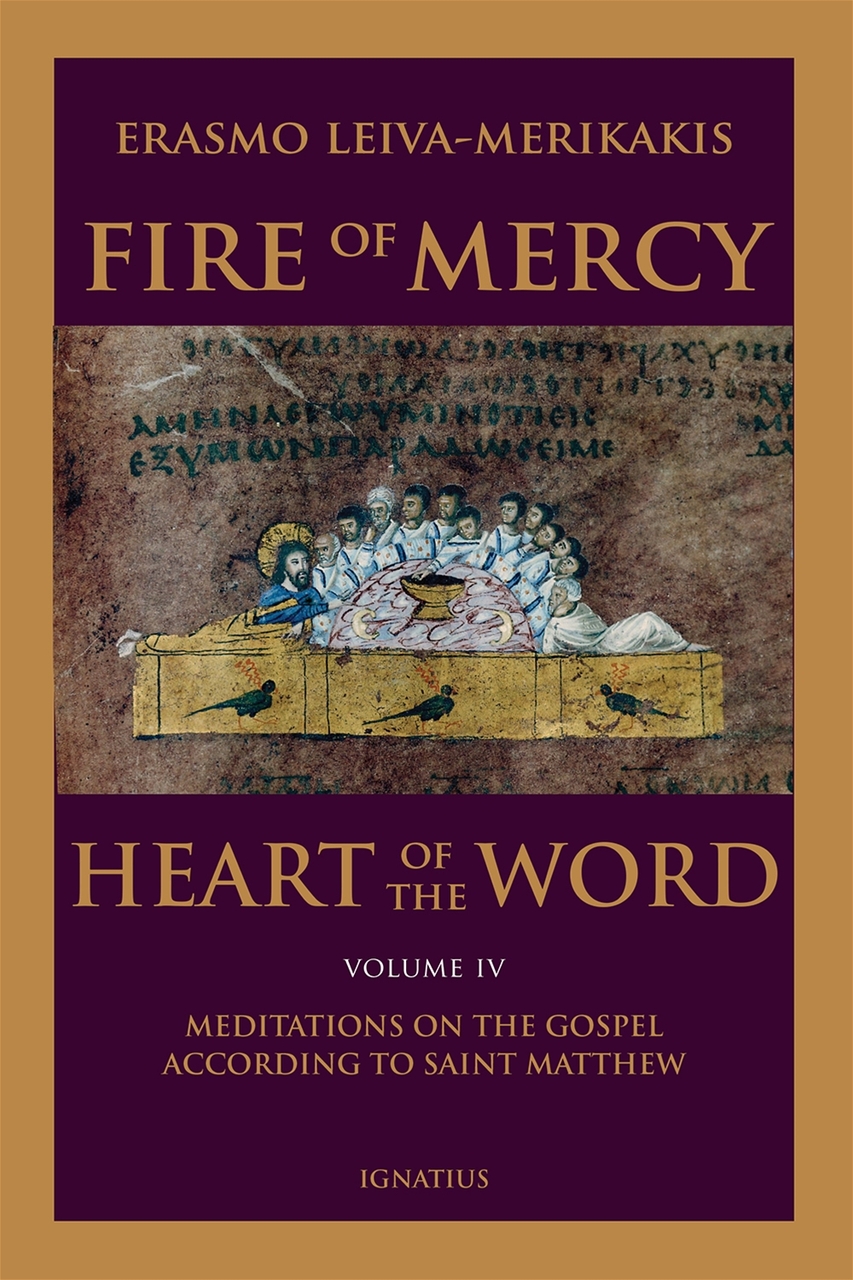
Lindsey Mitzel reviews a new series of meditations on the final chapters of the Gospel of Matthew, by Erasmo Leiva-Merikakis.
Having read some fabulous reviews of Erasmo Leiva-Merikakis’ previous works on the Gospel of Matthew, yet not knowing what to expect, I picked up his fourth volume, Fire of Mercy, somewhat timidly. The book is hefty, with its more than 600 pages of content, and admittedly, it intimidated me. I began to read it much like I have concordances in the past, and indeed, I think it can be utilized as such nicely. It is a very well-researched series of meditations on Gospel passages. However, this tome also reads as a novel. Mr. Leiva-Merikakis’ clear knowledge of ancient languages allows the characters of the Gospel to come even more alive. Jesus, fully God, is more human, more understandable, more endearing, more sacrificial, the woman at Bethany, more remarkable and self-giving than I previously realized.

Erasmo Leiva-Merikakis, now Fr. Simeon, O.C.S.O, is a former professor of Literature and Theology at the University of San Francisco. He obtained his PhD in Comparative Literature and Theology from Emory University and is now a Trappist monk at St. Joseph’s Abby in Spencer, Massachusetts. He has spent the last almost thirty years writing his four volume meditations on the Gospel of Matthew. Fire of Mercy was published just last year, and as it concludes with Jesus’ Passion, Resurrection and Great Commission, it also is the culmination of his meditative works.
I was especially drawn to Fr. Simeon’s meditation on the woman at Bethany who anoints Jesus with costly perfume prior to His betrayal and ultimately His Passion. He writes,
The woman’s deed has already been linked to the Eucharist by Jesus’ awareness of what shs has done to my body, and now it is related to the Eucharist a second time by Jesus as he declares the deed most worthy of eternal remembrance. In Luke we read: “And he took bread, and when he had given thanks he broke it and gave it to them saying, ‘This is my body which is given for you. Do this in remembrance of me’. . . (Lk 22:19). We may say that the woman has here celebrated with Jesus, by way of prefigurement, a prophetic Eucharist. (97)
I was also moved by Fr. Simeon’s discussion on Jesus’ prayer in the Garden of Gethsemane. He writes that in all the threats surrounding Jesus, what He wants most is to commune with His Father and his friends. He discusses how prayer is at the heart of Gethsemane, and that prayer is essentially a state of pure relation. However, while some of us may feel a need or desire to isolate ourselves in our deepest pain, in Jesus’ tremendous sorrow and anxiety, He, “Wants to conceal nothing from those he most loves, and the reason must be twofold: first, that he badly needs the human support of their presence . . . and, above all, he wants to initiate them into the mystery of divine compassion” (223). Fr. Simeon goes on to describe Jesus’ “being troubled” as a kind of “psychological and spiritual “homelessness”, and in Jesus’ “recent history of misunderstanding, rejection, and betrayal [He felt a] piercing sense of radically not belonging” (225). Such that when Jesus asks those three disciples who are with Him in the garden to “Remain here”, He may also be pleading, “At least you three, don’t go away” (225).
Later in the book Fr. Simeon reflects on Jesus’ hanging on the cross. After He is nailed to the cross, it is said, “He trusts in God; let God deliver Him now if He desires . . . “ (Matthew 27:43). Fr. Simeon reveals the irony in this statement, as those who scoff become prophets.
God’s will to save and enlighten prevails even in such a world because God’s compassion is always greater and more powerful than the worst man can do to thwart the sovereignty of goodness and justice. Therefore, in such a climate, fools and scoffers become, despite themselves, the instruments of revelation. (518)
While this volume can be read cover-to-cover like a novel, it can also be useful for insight into specific passages, especially when delving into the meaning of the original Greek. The appendix also includes notes and tips for lectio divina. This book would be a splendid addition to prayerfully meditating on the days preceding the Lord’s Passion, His Passion, and His Resurrection. Particularly with Lent approaching, I fully recommend this title to anyone who is considering delving more into Lectio Divina, or who would appreciate a guide to meditate along with these Scriptures during their Lenten journey this year!
Copyright 2022 Lindsey Mitzel
Image: Canva Pro
About the Author

Lindsey Mitzel
Lindsey Mitzel is a nurse practitioner and mom to six littles. When not homeschooling or driving her kids to various places, she enjoys gardening, hiking, and running. Lindsey appreciates dry humor, a good pun, and coffee. You can read more about her at Eight and a Half Months. Lindsey also occasionally writes for Be Love Revolution's Tiny Thoughts blog.


.png?width=1806&height=731&name=CatholicMom_hcfm_logo1_pos_871c_2728c%20(002).png)
Comments